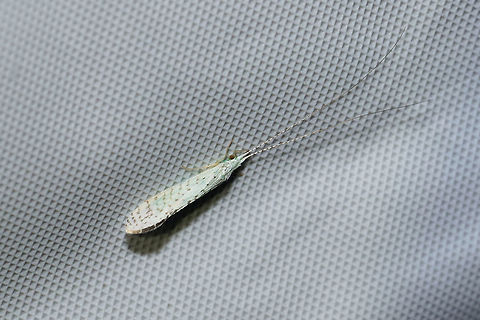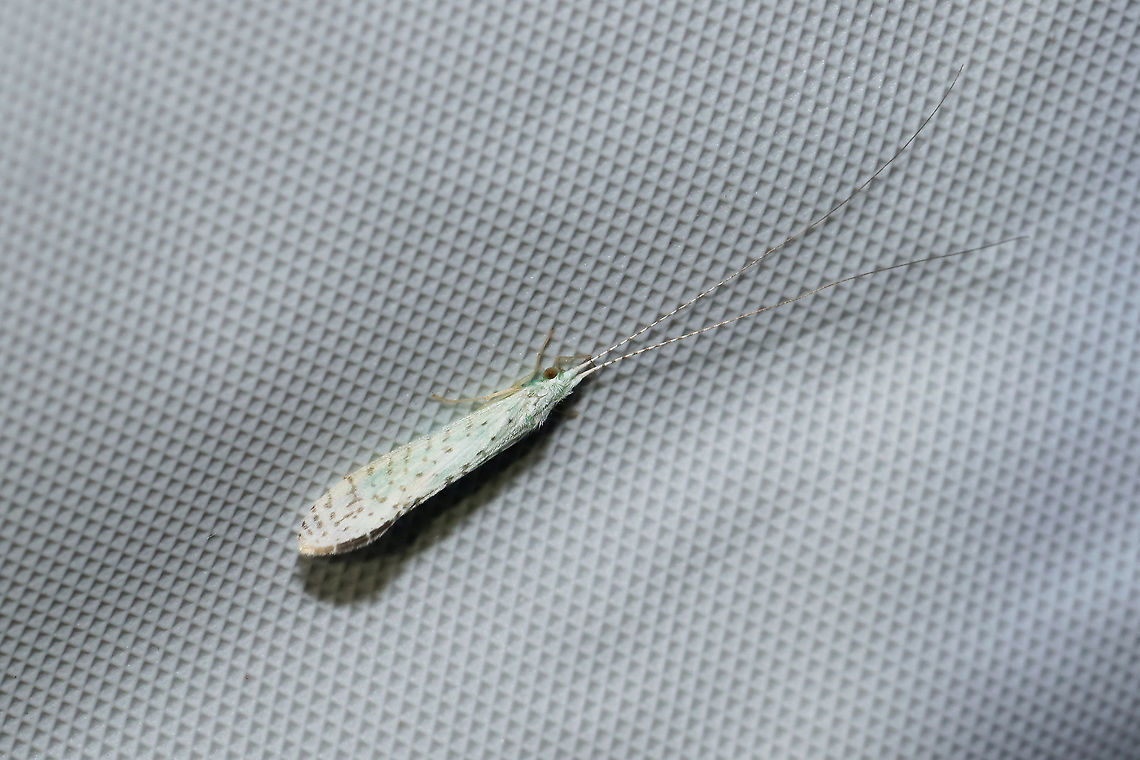
"Nectopsyche candida" is a species of long-horned caddisfly in the family Leptoceridae. It is found in North America.
Similar species: Caddisflies
By Flown Kimmerling
All rights reserved
Uploaded Aug 3, 2020. Captured Aug 3, 2020 06:45 in 227 Oakman Rd NE, Oakman, GA 30732, USA.


comments (17)
It makes you wonder what the role of the cloth is, other than convenience. Anyway, don't have clear answers at this point, just thinking out loud.
Ending with a tip that is obvious but for me was a nice gotcha: a textured sheet like yours is very handy for measuring the size of the moth. I'm the type of person that won't take notes in the field, I perhaps lack this discipline or truly want to focus on the photography. Yet with at texture like this, measuring size becomes easy.
Posted 5 years ago
https://www.researchgate.net/project/A-new-LED-UV-lamp-to-attract-nocturnal-Lepidoptera
If you scroll down quite a bit, you can see that this guy (inventor of LepiLED) studies the effect of a cloth on the effectiveness of the light source, in this case UV. In some comparisons, you can see different materials have different absorption/reflection rates.
So I should correct my statement: a material that absorbs a lot of the light of your light source is bad. A material that reflects a lot of the light is actually good.
By this logic, I imagine a shower curtain to be quite reflective. Yet I guess it can also be too reflective when using flash. And to add, if it's very reflective, it lights up the surroundings strongly, hence the moths next to the cloth instead of on it. But then again, I have the same problem with traditional textile.
To end with one other surprising conclusion: in controlled conditions, the strength of the light source seems to not matter. Moths do not go to the stronger light if you'd put 2 next to each other, one strong, one weak. They're attracted to the spectrum of the light, not its power.
Of course, if you'd be in a huge open forest, a stronger light can reach more distant moths, yet those within reasonable direct range, do not require a very strong light, unless you're competing with other light.
This ends my TED talk. Posted 5 years ago, modified 5 years ago
Considering lights...I find that I get more moths when I used an incandescent light, in addition to UV lights. I typically use 3 lights: a 395 nm UV light strip on one wall, a 395 nm light hanging in front of the sheet, and the regular incandescent light on the side of my house. All 3 lights are within 5 feet of each other. Variety is reduced without the UV lights. And, if I turn off the incandescent light, I get significantly fewer insects. I assume the incandescent light travels further, but am not sure. Posted 5 years ago
This should be read as that UV attracts additional species that may not come if you'd have no UV at all. This aligns with your finding on variety.
I really think you have a winning strategy by using mixed lights, for as long as they don't outshine each other. They probably don't in your case. And with such a mixed light "wide net" approach, I wonder if the cloth material really makes a big difference. I think it matters but perhaps not a whole lot. Posted 5 years ago
What I ordered:
https://www.amazon.com/gp/product/B07BGLRSJT/ref=ppx_yo_dt_b_asin_title_o08_s00?ie=UTF8&psc=1 Posted 5 years ago, modified 5 years ago
What about weight? Heavier than a normal sheet? Posted 5 years ago